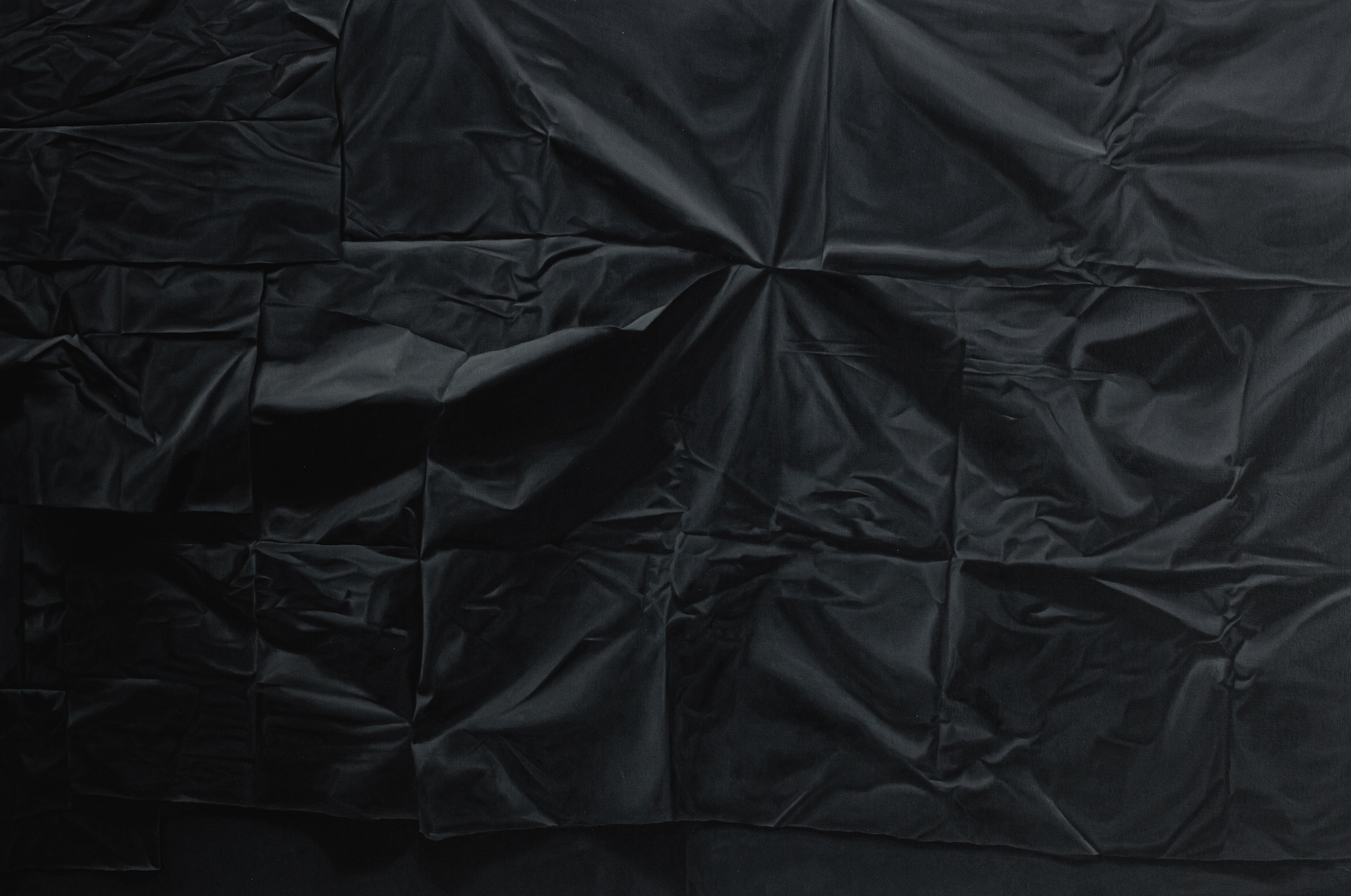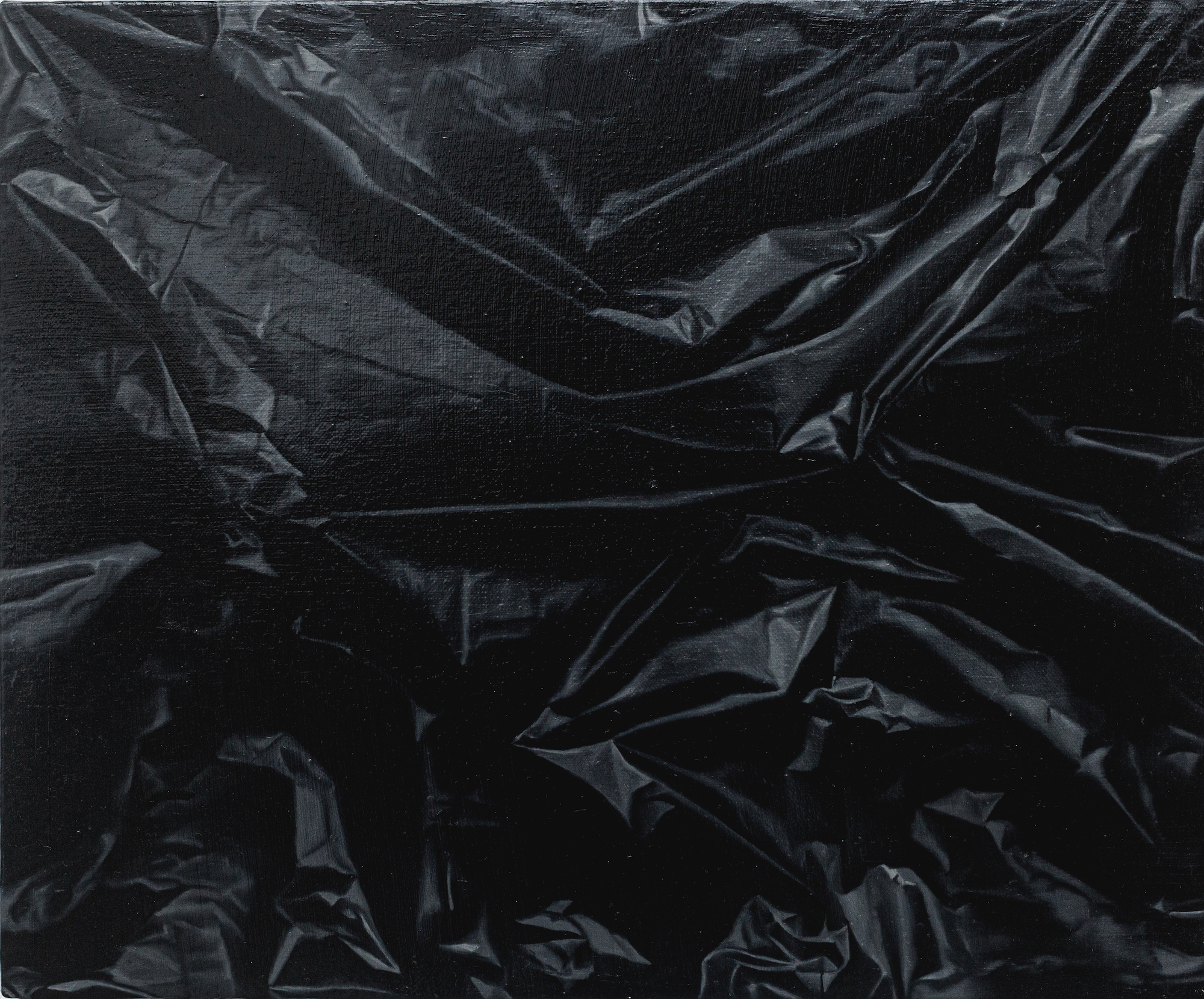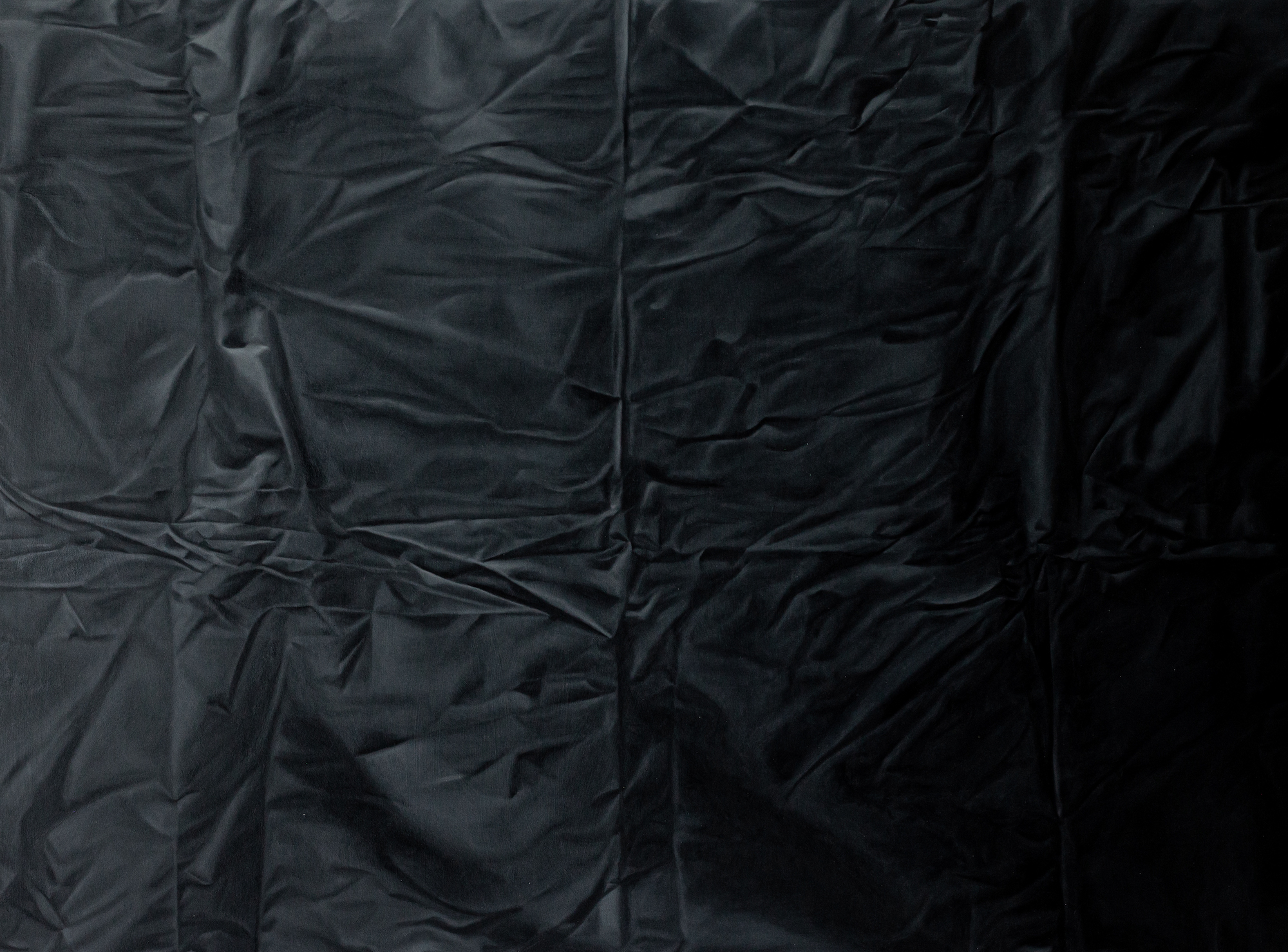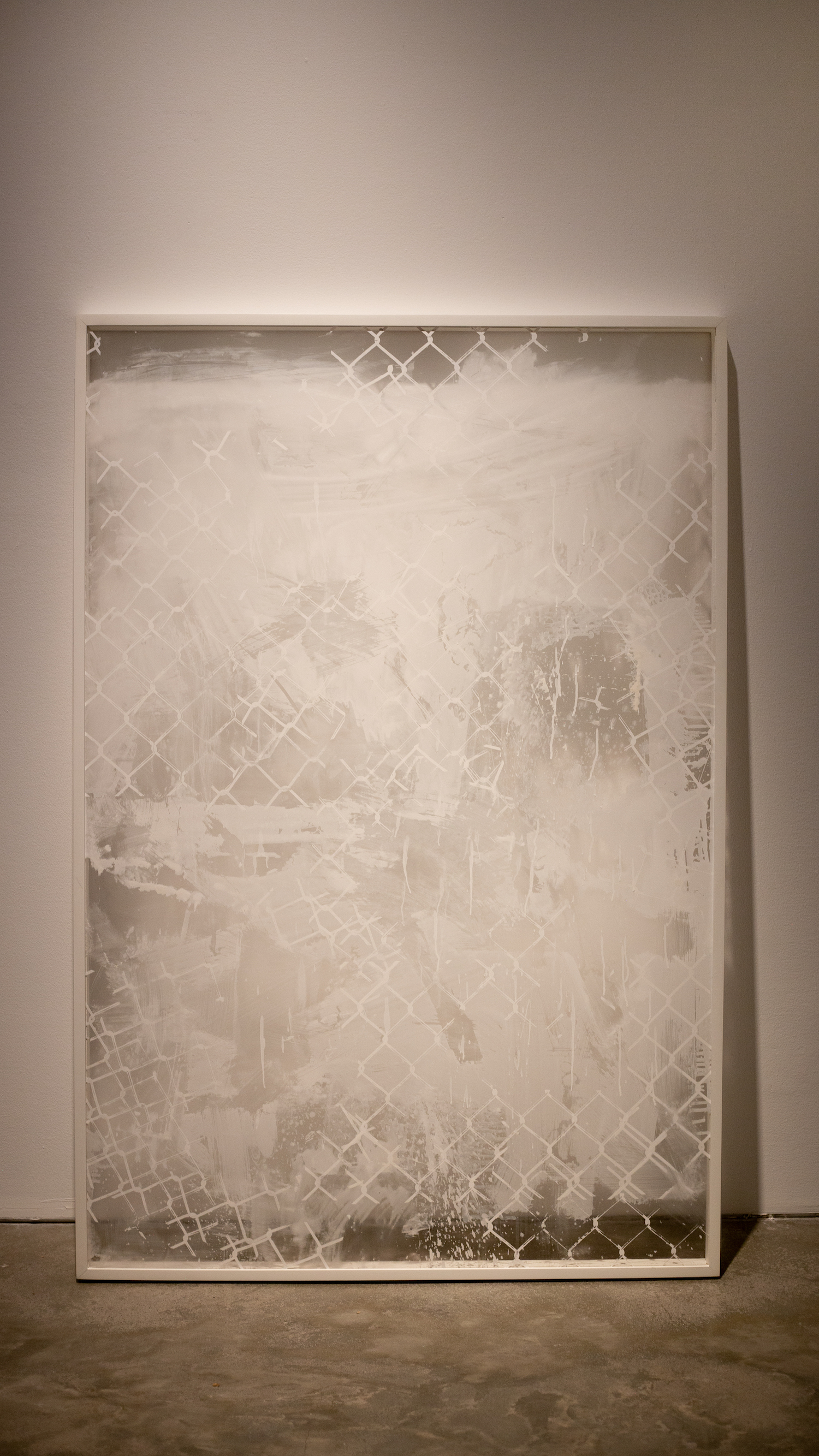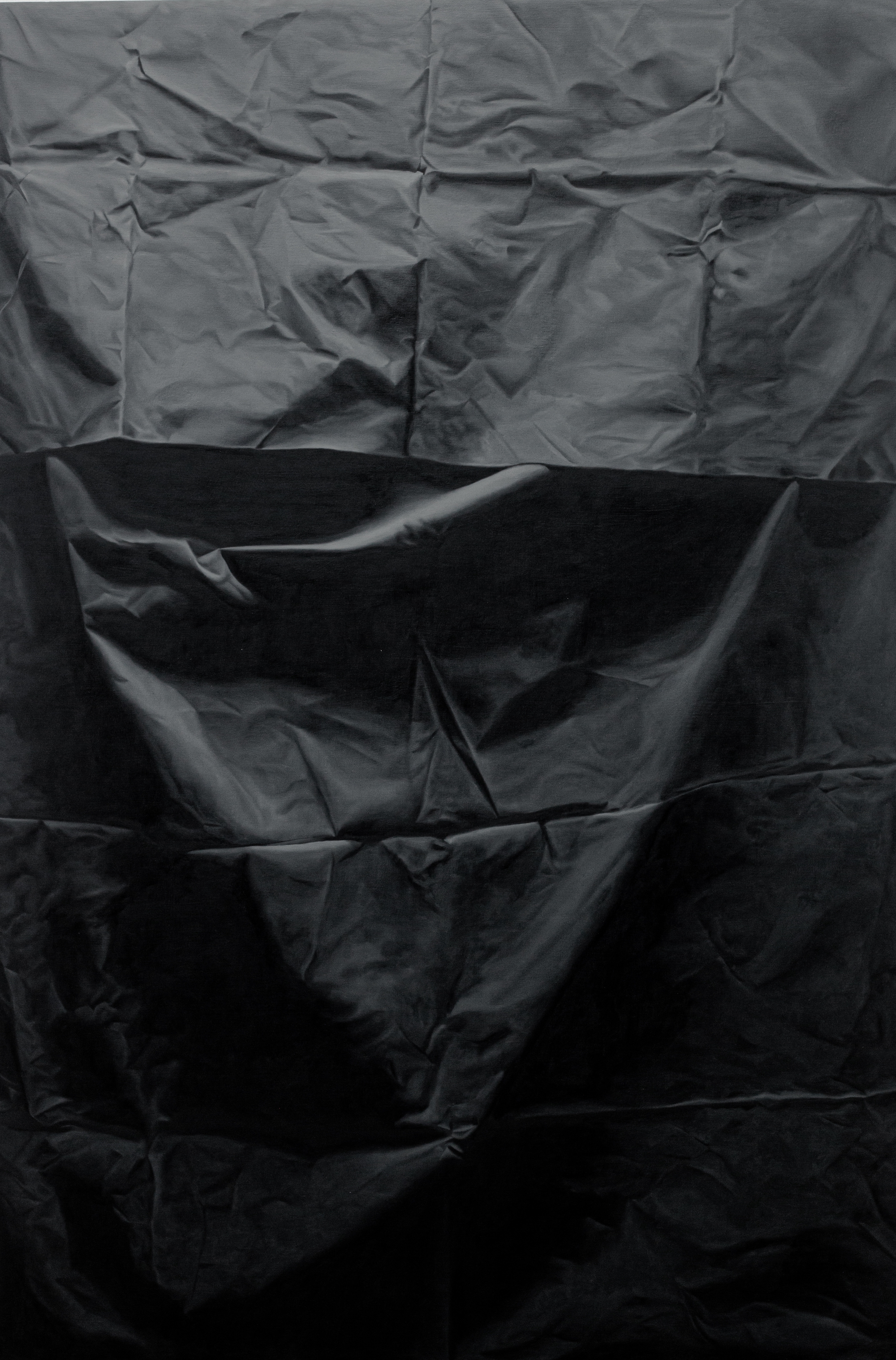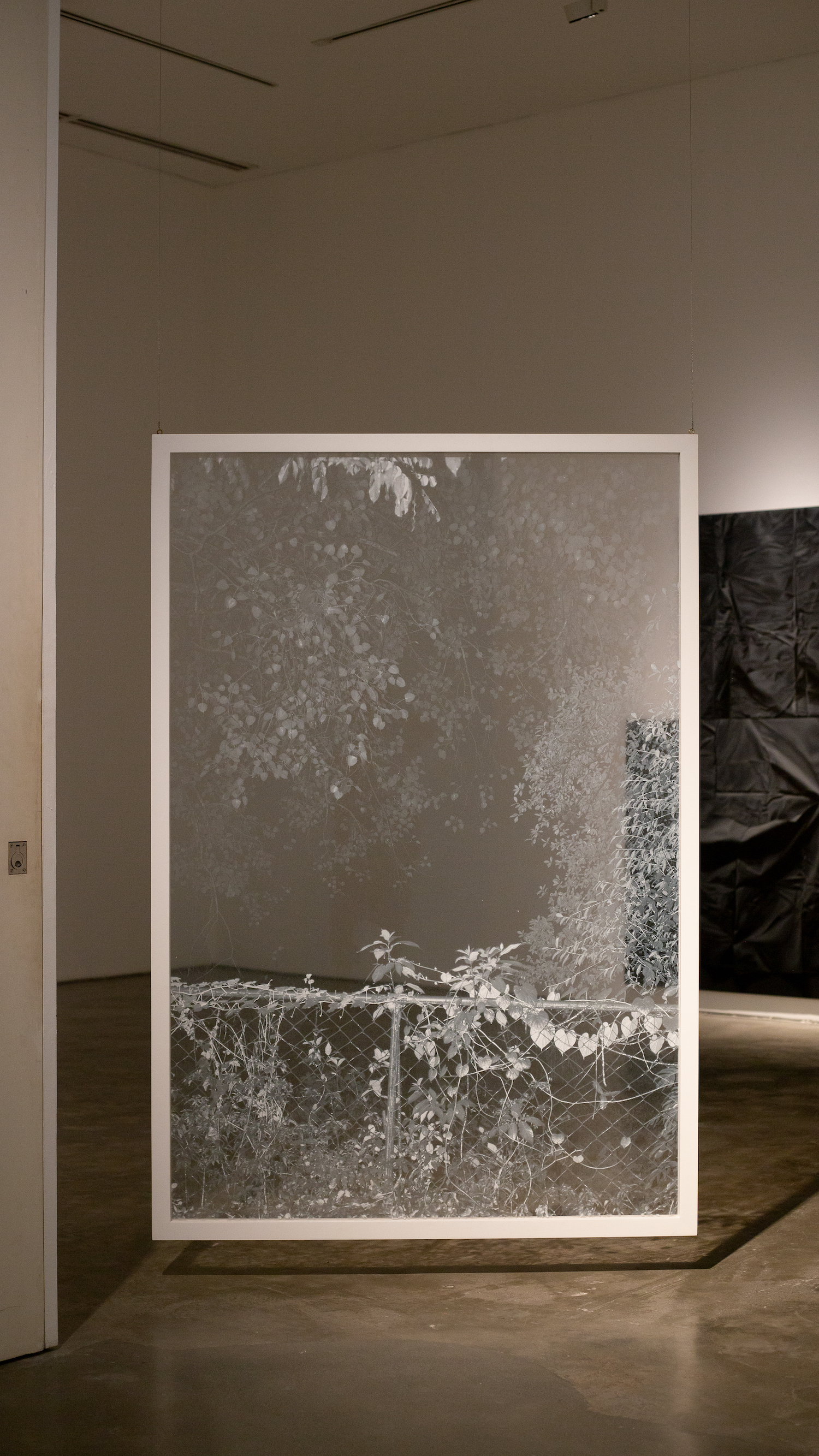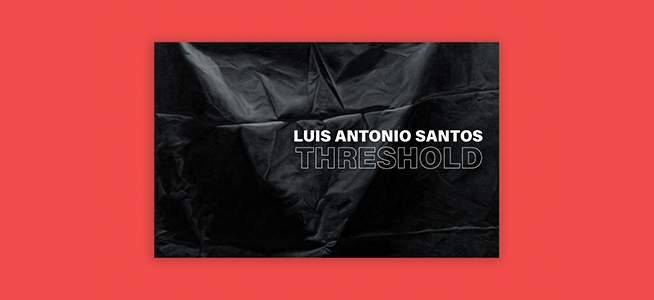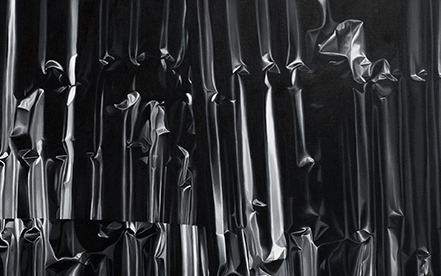
About
A threshold demarcates space. It signifies a physical boundary, yet the term doubly exists as an indicator of the point at which something begins to change. We use “threshold” to measure the very limit of things like pain, temperature, longing, rooms. Similarly, the imagery Luis Antonio Santos utilizes for Threshold stands in as marks between states and spaces. The subjects of the work themselves are liminal spaces, enclosed in a constant sort of in-betweenness, delineating one state from another: the pause before a change.
The paintings of drapery and prints of fences both feature innocuous material, usual fare for Santos, who works with the meanings imbued in these everyday, ubiquitous sights. In working with recurring imagery, new meanings begin to compound over time and shifts in perspective. Connections are made between these revelations, and the story grows into another.
The drapery, for example, is easy enough to ignore when encountered in daily life. Often, these canvases, tarpaulins, garbage bags exist to cover up something that is not meant to be seen; a band-aid solution to the visibility of something unpleasant, or simply just not ready.
As the subject of his paintings, these barriers shift the focus from what is being protected or removed from our gaze — what is under construction, discarded, or in the middle of becoming — to the very things that are enclosing them. What is put in the forefront is the vessel rather than what it contains. Seeing these things, we become privy to the implication that behind these marks of demarcation, there is something that is not quite one or the other just yet.
There is a difficulty to pin down one specific state of these imaginary objects and spaces (as what we see are the covers and barriers; never what is covered up), and it leaches into his process, too. The work in Threshold eludes genres.
The paintings are rendered on a flat surface, giving off a dimensionality through tonal changes and a careful hand. They were worked from a three-dimensional sculptural object, the folds and drapes informed by the shape of the wooden stretcher, the innate character of the fabric and materials, their interactions with the light, and the pull of the earth. These veiled formations are then captured as a photograph for reference, and then recaptured as paintings that look like something actual, rather than a simple representation.
The fences are screen printed and painted in white — effectively, a reverse image — on a clear sheet of plexiglass. White has been thought of to represent negative space, used to carve out or signify that which is absent. Here, it embodies what we are meant to see. The image of the fences is leaned against a wall, and the shadows from this image create another one on it: mimicking the actual physical barrier with light and shadow. It encases something visibly, though not physically, as objects can move in and around shadow.
A photograph of a decommissioned property is reproduced in white ink. It is overgrown with foliage, both a sign of life and the lack of it. In its removal from public use, the property — man-made delineations of space — has returned somewhat to its previous life, where the natural flora has been allowed to overtake the artificial imposition. A reterritorialization. It may well be a matter of time before it is reclaimed as a space for use again, with its importance and value dictated by what is needed or lucrative in the future, but for now, it is being swallowed up by the earth, in a state that will change and keep changing.
This work is set in front of the other work. These can be perceived alone or together, each time, position, and angle revealing a different part of the image, while masking and obscuring the other parts of it. Similar to the fences, this photograph’s negative space floats around and is encased by the image in white ink. Seen through this photograph, the paintings behind it are never seen in a completed state. Our gaze is limited by a boundary, but it is through these paintings that the gaps are filled in, and we can see more clearly what is in front of us.
Santos’ favored imagery has adopted more ubiquity, as these barriers have become more prevalent and apparent over the last year and a half. These have become more indicative of the times, as life as we knew it has paused and remains at a standstill. We have become dislocated, displaced, and isolated. Though in a constant state of change, everything remains as it was until the world emerges in the end, with the barriers lifted, only to keep changing, never quite pinned down to one final form.
Words by Carina Santos
Luis Antonio Santos (b. 1985) lives and works in Quezon City as a visual artist working primarily with painting and photography. His practice revolves around the tension between contradictions and engages with themes relating to identity using time, space, and memory as points of departure. Oil painting, screenprinting, and digital manipulated photography as aesthetic strategies are often employed along with the use of everyday utilitarian materials as subject matter to examine these ideas. He has been exhibiting since 2010 with solo shows at West Gallery, Silverlens Gallery, Blanc Gallery, Finale Art File, MO_Space, and most recently, the Drawing Room. He has also been included in several group exhibitions in Manila, Singapore, Hong Kong, and Malaysia. He has been shortlisted for the Ateneo Art Awards twice (2014, 2015) and has been nominated for the Signature Art Prize, Singapore Art Museum (2018).
Carina Santos is an artist and writer based between Manila and London. She finished her MRes in Art: Theory and Philosophy at Central Saint Martins in 2019. Her research focus is on the inflection of space to the body, read through notions of linguistics and translation, phenomenology, and colonisation.
Installation Views
Works
